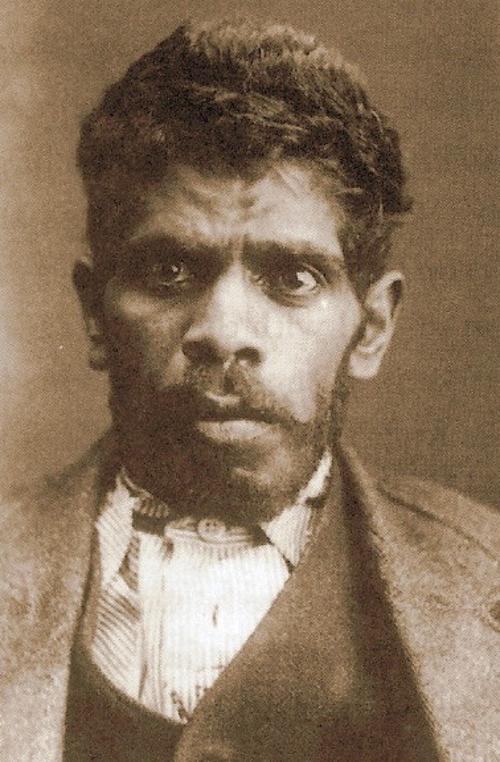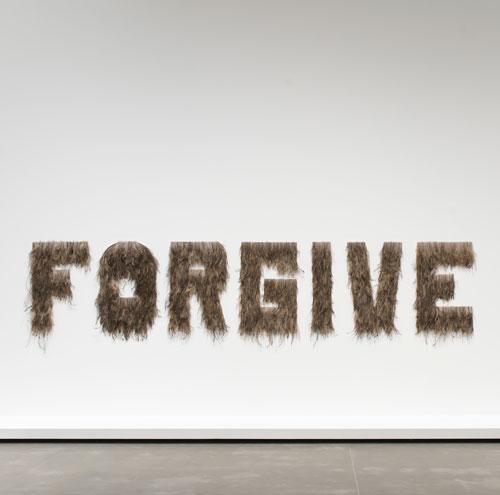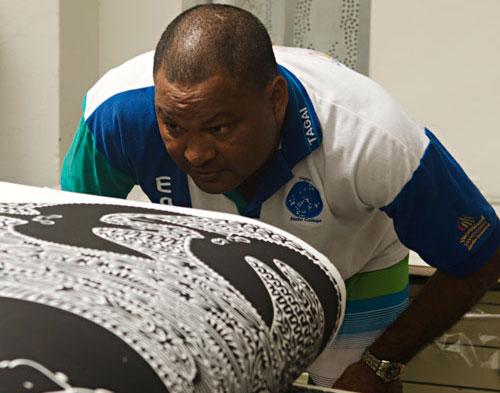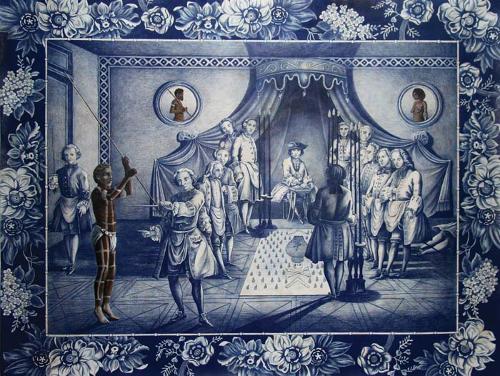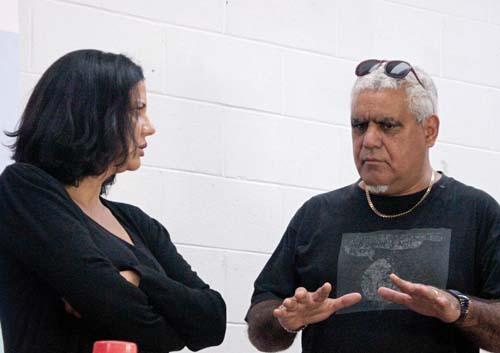.jpg)
IASKA was named for, and grew out of, the International Art Space Kellerberrin Australia, and is renowned for fostering cutting-edge contemporary art. Based originally in Kellerberrin in Western Australia's wheatbelt, IASKA reinvented itself in 2008 in the form of two-year cycles of geographically dispersed, community-based residencies that culminate in centralised biennial events. In scope, it represents the State’s highly diverse geographic, climatic and economic zones, with multiple rural townships and remote communities actively facilitating IASKA’s projects, and simultaneously ensuring local participation and relevance.
Spaced: Art Out of Place, the inaugural (2009-2011) event, included sixteen demographically diverse communities, from Jakarta to Esperance, and Leonora to the Abrolhos Islands. Twenty-one Australian and overseas artists and collectives participated: Art Oriente’ objet, Bennett Miller, Jakub Szçzesny and Kaja Pawelek, Julia Davis, Kate McMillan, M12, Makeshift, Michelle Slarke, Mimi Tong, Ned Hansel, Nigel Helyer, Philip Samartzis, Roderick Sprigg, Sohan Ariel Hayes and Michael Woodley, Sonia Leber and David Chesworth, Takahiko Suzuki, and Wouter Osterholt and Elke Uitentuis.
Hosted by the Fremantle Arts Centre, in association with the 2012 Perth International Arts Festival, the event included an exhibition of new works, a catalogue and a contextualising two-day symposium through which the artists, keynote speakers and regional community representatives discussed the scope, outcomes and trials and tribulations of each project. A 152-page post-event publication will include comprehensive documentation and discussion.
The projects do not regurgitate clichés about rural life in Australia, but demonstrate that locals, visitors to the State and communities overseas are actively learning from each other and sharing experiences that would not otherwise be available.
To the Other End by Dutch artists Wouter Osterholt and Elke Uitentuis, followed WA’s live sheep export to Bahrain. They collected wool from Lake Grace farms, hand spun yarn and knotted a Baluchi funeral carpet. Collaboratively with Michelle Slarke, Lake Grace author of Point of Slaughter, they explored issues surrounding the live export trade that regularly leaves the Fremantle region squirming with ethical discomfort, stinking of urine and faeces, and swatting flies. The carpet was used in Bahrain for the ritual slaughter of a sheep and later exhibited in Fremantle. According to Uitentuis, the project explores how ethics are politically swept under the carpet in favor of economic gain, because sending sheep live, rather than dressed and refrigerated, is less expensive for both Australian exporters and Middle Eastern importers. She also called for collective action, explaining that human rights abuses are rife in Bahrain and that, by association, WA is supporting an undemocratic and brutal government.
Sydney-based Julia Davis’s project in the breadbasket town of Mukinbudin resulted in a comparatively more poetic outcome. Her residency coincided with farmers waiting for rain, and Davis had extended opportunities to talk with them and to reflect on 'whitefella’ relations with the land, including her own. Headspace, a self-portrait bust made from local lake salt, was left to dissolve on the lake. Davis aligned this ‘death by slow drowning’ with the farmers’ dilemma of trying to sustain a livelihood in an agricultural belt steadily degraded by rising salinity. In Leveled Ground, Davis visually represented digitally recorded interviews and portraits of locals forced to move off their farms. In 2010, the year of Davis’ residency, WA’s wheatbelt was facing diminishing flocks of sheep and the lowest crop yields ever recorded.
.jpg)
In contrast to Davis’ bleak forecast, The Way You Move Me, Leber and Chesworth’s immersive large-screen video and sound installation, was breathtakingly pastoral, seductively sweeping us into green pastures swelling with rotund bleating sheep, stampeding cattle, and undulating fields of yellow flowering canola. However, farming marginal land in Moora, as elsewhere in WA, entails a relentless cycle of manipulating livestock, controlling weeds with poison, and the urgent planting and harvesting of crops when the weather cooperates. To survive means constantly "choreographing containment" (a term used by Sonia Leber at the symposium), as alluded to by signalled commands, working dogs, sorting pens and the circular rhythm of breaking in a horse in the lunging ring.
Further afield, Sojourn in Espérance Bay, by Sydney-based collective Makeshift (Tessa Zettel and Karl Khoe), resulted in a performance involving a meal of local bush food, sourced with the help of knowledgeable locals, and served at a table in the midst of a salt lake. The project’s early colonial associations query whether, in the space of 200 years, we have developed any better understanding of how WA’s landscape will support future food requirements.
In Birndi Wirndi - Worlds Apart, Sohan Ariel Hayes and Michael Woodley worked with the Roeburne Juluwarlu Aboriginal Corporation and local Yindjibarndi community to create a multi-channel video projection. Roeburne’s old Victoria Hotel, historically the centre of mining boom excesses and racially motivated discrimination, serves as a faceted projection screen for archival footage and contemporary Aboriginal perspectives of how WA’s mining boom continues to threaten land rights and social justice. Like Osterholt and Uitentuis’s project, this project is not about provoking empathy, but collective action.
IASKA’s new geographically expansive residency program and biennial event strongly supports its long-standing philosophy of encouraging artistic exploration of global issues in relation to Australian culture, society, and natural environment. Most of the artists, in the process of researching, negotiating, and developing their projects, created socially engaged, reflexive, and critical discourse, locally and beyond. Projects that relied heavily on documentation were the least visually engaging. The question also arose “where are the communities in the exhibition?” However, the biennial event in its entirety, including IASKA’s revised website, does bridge gaps that inevitably occur between a site-specific work, its local audience, and a geographically distant, conventional group exhibition. Attended by more than 7000 visitors, Spaced certainly succeeded in embedding and extending contemporary issues and regional voices through innovative contemporary art.


